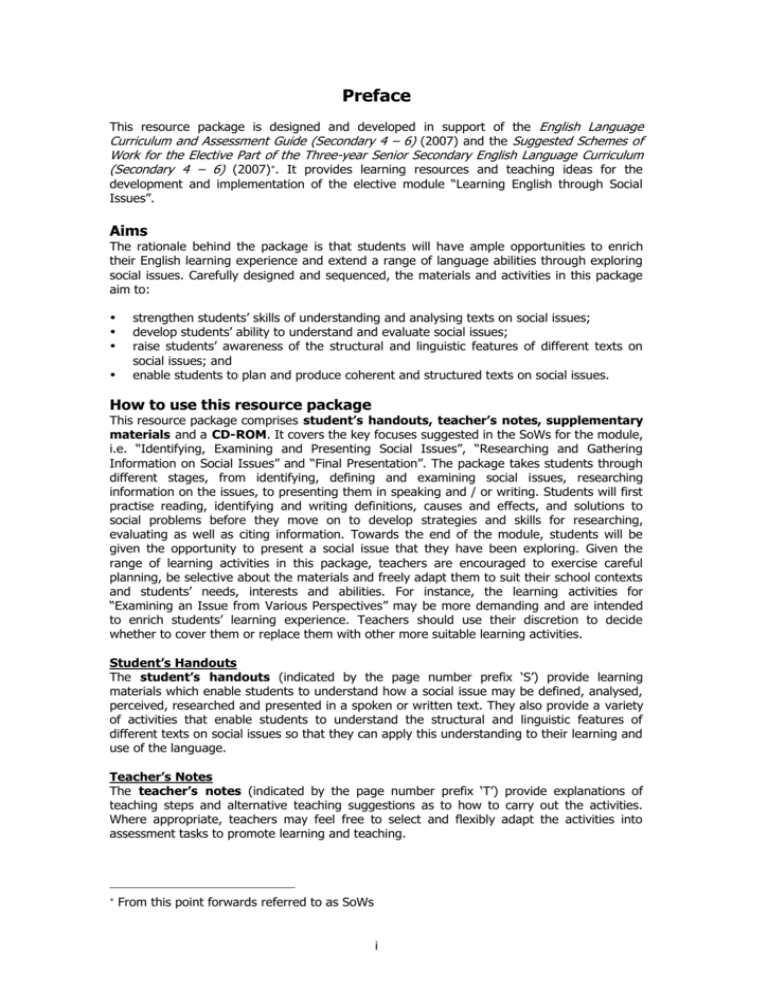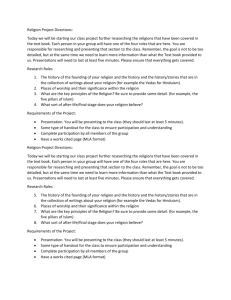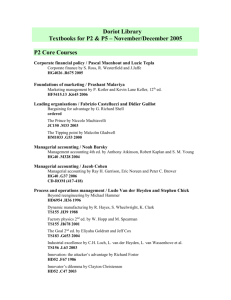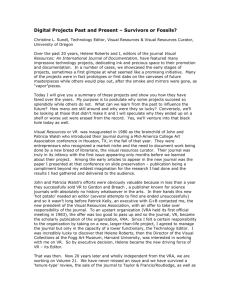English Language Learning Resource Package: Social Issues
advertisement

Preface This resource package is designed and developed in support of the English Language Curriculum and Assessment Guide (Secondary 4 – 6) (2007) and the Suggested Schemes of Work for the Elective Part of the Three-year Senior Secondary English Language Curriculum (Secondary 4 – 6) (2007). It provides learning resources and teaching ideas for the development and implementation of the elective module “Learning English through Social Issues”. Aims The rationale behind the package is that students will have ample opportunities to enrich their English learning experience and extend a range of language abilities through exploring social issues. Carefully designed and sequenced, the materials and activities in this package aim to: strengthen students’ skills of understanding and analysing texts on social issues; develop students’ ability to understand and evaluate social issues; raise students’ awareness of the structural and linguistic features of different texts on social issues; and enable students to plan and produce coherent and structured texts on social issues. How to use this resource package This resource package comprises student’s handouts, teacher’s notes, supplementary materials and a CD-ROM. It covers the key focuses suggested in the SoWs for the module, i.e. “Identifying, Examining and Presenting Social Issues”, “Researching and Gathering Information on Social Issues” and “Final Presentation”. The package takes students through different stages, from identifying, defining and examining social issues, researching information on the issues, to presenting them in speaking and / or writing. Students will first practise reading, identifying and writing definitions, causes and effects, and solutions to social problems before they move on to develop strategies and skills for researching, evaluating as well as citing information. Towards the end of the module, students will be given the opportunity to present a social issue that they have been exploring. Given the range of learning activities in this package, teachers are encouraged to exercise careful planning, be selective about the materials and freely adapt them to suit their school contexts and students’ needs, interests and abilities. For instance, the learning activities for “Examining an Issue from Various Perspectives” may be more demanding and are intended to enrich students’ learning experience. Teachers should use their discretion to decide whether to cover them or replace them with other more suitable learning activities. Student’s Handouts The student’s handouts (indicated by the page number prefix ‘S’) provide learning materials which enable students to understand how a social issue may be defined, analysed, perceived, researched and presented in a spoken or written text. They also provide a variety of activities that enable students to understand the structural and linguistic features of different texts on social issues so that they can apply this understanding to their learning and use of the language. Teacher’s Notes The teacher’s notes (indicated by the page number prefix ‘T’) provide explanations of teaching steps and alternative teaching suggestions as to how to carry out the activities. Where appropriate, teachers may feel free to select and flexibly adapt the activities into assessment tasks to promote learning and teaching. From this point forwards referred to as SoWs i To help teachers to support “less advanced students” and stretch “more advanced students”, additional suggestions are contained in the “Catering for Learner Diversity” boxes. Language notes are also provided, where appropriate, to draw teachers’ attention to grammar and vocabulary items that can be introduced in connection with a particular learning activity. Suggested time allocations have been provided for each activity for teachers’ reference during lesson planning. However, the suggested time is for indicative purposes only and will vary according to learners’ needs and abilities. Teachers should use their professional judgement to gauge appropriate timings with a particular group of learners in mind. References to websites that contain materials helpful to the learning and teaching of particular activities are also included in the teacher’s notes. The weblinks or addresses which were accurate at the time this package was published are yet subject to change. Teachers might like to make use of a search engine to regain access to any resources that have been relocated, or may look for similar resources on the web. Supplementary Materials The supplementary materials section provides additional teaching materials and resources for teachers’ use and reference. The following items are included in this section: A Glossary which gives the definitions of difficult words in the package is provided to assist teachers in explaining them to students. Words that appear in the glossary are marked with an asterisk in the student’s handouts or teacher’s notes at their first appearance. The glossary can also be given directly to students at the beginning of the module so that it can be referred to throughout the course, and students can be asked to add any other vocabulary items to the list for their own reference and revision. Research Project Forms are provided to guide students to plan their research and presentation on a social issue. Teachers should help students to select a suitable topic and decide on the best way to research and present it. A Sample Essay on Internet addiction is included to illustrate how a social issue can be discussed in four steps: definition, causes, impact and solutions. It can be analysed as each step is covered throughout the course, or be used towards the end of the module for consolidating students’ knowledge on the four steps. It also serves as a reference for students who are presenting their social issue in the form of an essay. CD-ROM The CD-ROM consists of an electronic version of the learning and teaching materials in this resource package, as well as recordings that support some of the learning activities in the package. The text files are available in both PDF and MS WORD formats for ease of use and adaptation. The audio and video recordings in the CD-ROM are examples of interviews and presentations that serve to demonstrate the qualities needed for a successful interview and presentation. Track numbers of the recordings are provided in the instructions to teachers for relevant activities and on the cover page of each focus in the teacher’s notes. To further support the implementation of the module, other relevant online teaching resource materials for each module have been developed and can be accessed at the English Language Education Section website <http://cd.edb.gov.hk/eng>. ii








